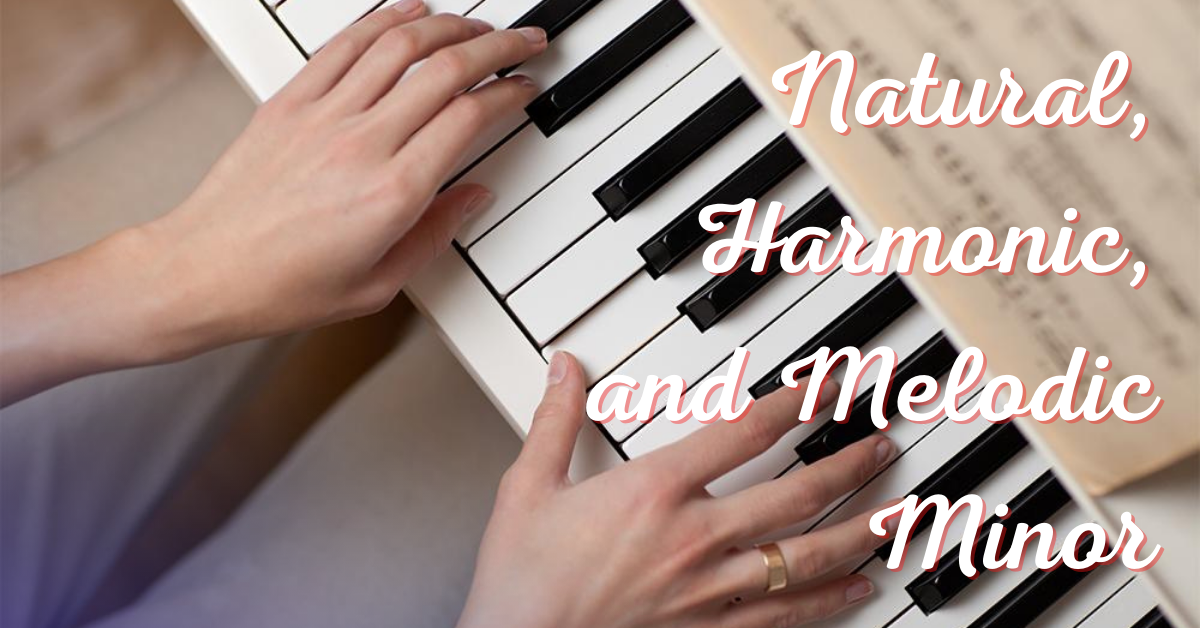Beginner's Guide To Exciting Natural, Harmonic, And Melodic Minor Scales

In our article "Relative and Parallel Minor," we explained the often confusing terms that are associated with the minor scale. In this article, we will learn the differences, as well as how to construct, the natural, harmonic, and melodic minor scales.
Many students find it easiest to begin with a major scale and use that major scale as a reference point. We will do the same here. Let's start with an F major scale.

As you can see in the scale above, each note of the major scale is given a number (a scale degree) which represents its placement or order within the scale.
Natural, harmonic, and melodic minor are simply various forms of the minor scale. In other words, they are all versions of a minor scale, with slight but significant differences among each.
Natural minor
In order to create a natural minor scale, we simply start with the major scale and lower the 3rd, 6th, and 7th scale degrees by a half-step. In our example above using the F major scale, this means we will be lowering the A (the 3rd) to Ab, the D (the 6th) to Db, and the E (the 7th) to Eb.

The natural minor scale is related to a major scale because it shares the same key signature as a major scale. Looking at our newly created F natural minor scale, we can see that we have 4 flats in the scale, and so the key signature would read Bb, Eb, Ab, and Db. This is the same key signature as the key of Ab major. For this reason we can say that F natural minor is the relative minor of Ab major. (And remember that when in a major key, the relative minor scale can be constructed simply by using the same pitches but treating the 6th scale degree as the starting note).

Harmonic Minor
The harmonic minor scale differs from the natural minor scale in only one way - the 7th scale degree is raised by half-step. In other words, in a natural minor scale the 7th scale degree is a minor 7th, whereas in a harmonic minor scale the 7th scale degree is a major 7th (and will be a half-step away from the root of the scale). When the 7th degree of any scale is a half-step away from the root it is called a leading tone, and so the important difference between the natural and harmonic minor scale is that one has a leading tone while the other does not.

Melodic Minor
The melodic minor is a bit... weird. In the traditional sense, melodic minor has an ascending form and a descending form, meaning that the notes in the scale changed based on whether you are playing up the scale or down the scale. In practical music performance circles (especially in the jazz world) the melodic minor scale is the same whether ascending or descending.
First the traditional approach: When playing the ascending form of the melodic minor scale, only the 3rd scale degree is lowered by half-step. The scale is the same as the major scale with the exception of the lowered 3rd.

When descending, the scale reverts to the natural minor form.

In jazz circles for example, the melodic minor scale uses the ascending form regardless of which direction one is playing the scale.
